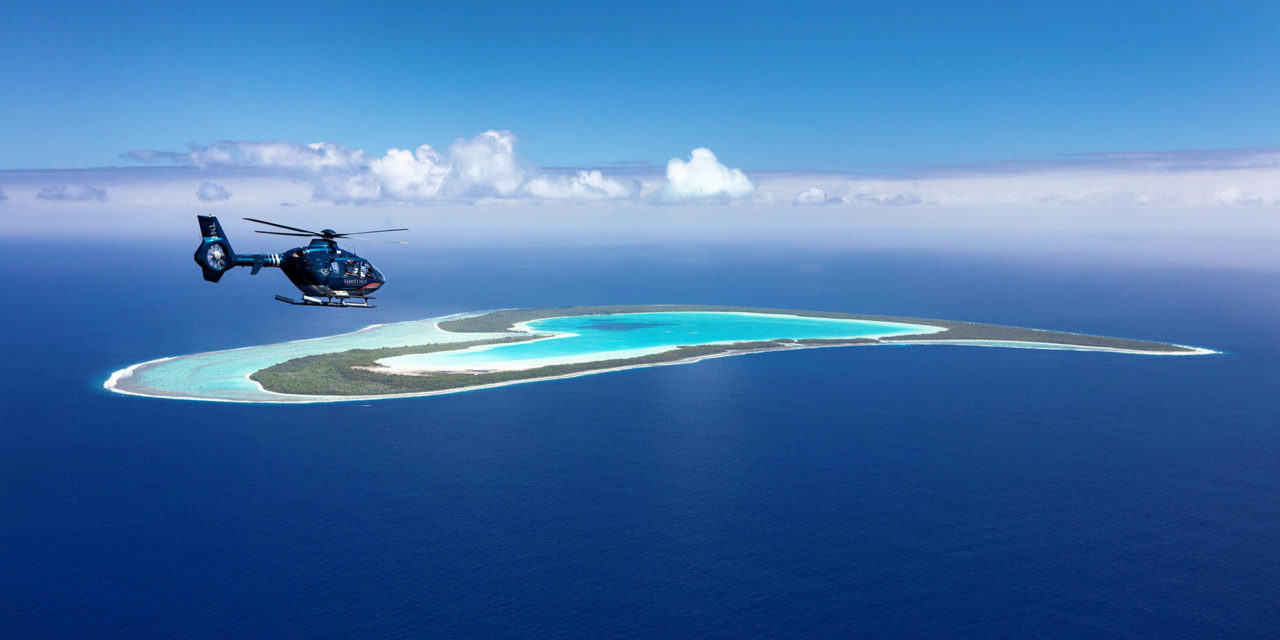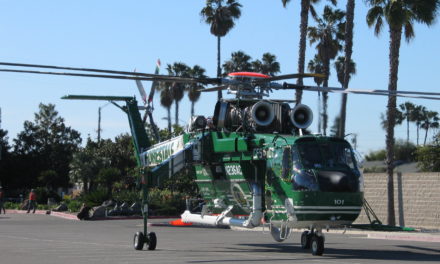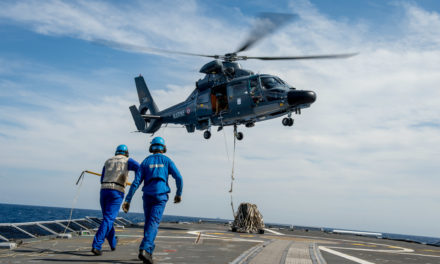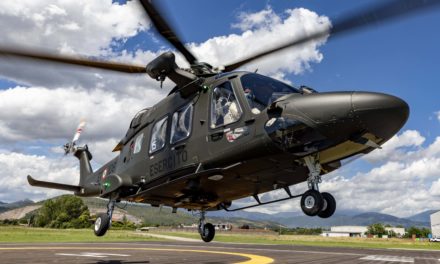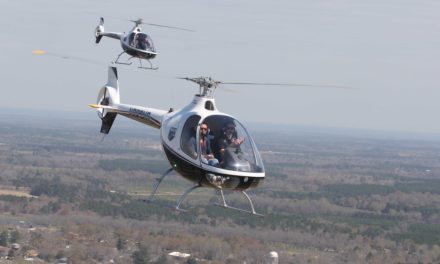For a little over 18 months, Tahiti Nui Helicopters (TNH) has operated in French Polynesia, as a specialized helicopter transport company, bringing to this part of the world the service which lacked. Will the efficiency of its H135s allow TNH to succeed in this demanding environment where other companies have failed before it?
Transparent waters, palm trees and white sand… The postcard landscapes of French Polynesia are spread over a territory as large as Europe, with a hundred islands grouped into five archipelagos. If this scattering contributes to the charm of the territory, it singularly complicates the logistics of air operators. Hard to imagine that the helicopter has no place in this art piece, and yet…
In the space of a few decades, three helicopter transport companies have succeeded each other in French Polynesia. Three attempts that resulted in three economic failures, due to a lack of operational profitability. And, since July 2017, the territory no longer has a commercial operator, the only helicopters available for all of Polynesia being those of the French Navy: two N3 + Dolphins from the 35F Flotilla and the Alouette 3 from the 22S Squadron, which is normally used on the ship the Prairial for surveillance missions. “This absence of a private operator was a very unsatisfactory situation for the Polynesian government,” said Laurent Touvron, Chief Operating Officer for Tahiti Nui Helicopters. “He therefore asked Air Tahiti Nui, the main local air carrier, of which it is a shareholder, to approach the HBG group to study the establishment of a helicopter service. Air Tahiti Nui would bring its commercial know-how and knowledge of the local situation. The HBG group, which controls several operators in different parts of the world, would offer its expertise in helicopter operations.” The creation of Tahiti Nui Helicopters (TNH) was made official on April 1, 2018, and it began operating in July 2018, upon obtaining its air operator certificate.
TNH currently has three aircrafts, two twin-engine H135s and a single-engine AS350B2, which have been shipped by boat from mainland France. After 45 days of travel, the first H135, equipped with a digital flight panel; the B2 arrived in April 2018, and the second H135 with analog instrumentation, a month later. At the same time, Laurent Touvron built his team: a pilot and two technicians were recruited on the spot, then three other pilots and a mechanic recruited in France by HBG. A twin-engine aircraft and the AS350B2 are based in the northern area of Papeete-Faa’a International Airport. The second H135 is on the TNH base in Bora Bora, 230 km northwest of Tahiti. Thus, the aircrafts are positioned across the archipelago with a flight autonomy of approximately two hours, enabling them to truly shine across the French Polynesian islands. However, the Austral Islands and Marquesas archipelagos will be outside of their reach. Since 2007, the Marquesas (10,000 inhabitants) have not had a helicopter service, because of economic reasons from airline competition. The planes can only land on four of the eight islands in the archipelago, where transfers between the islands, including medical evacuations, are therefore carried out by boat. This solution is far from ideal. (See box)
Tourism flights of the French Polynesian islands represent two-thirds of TNH’s activity. Almost all hotels in Bora Bora have their own helipads. These are only available during the day, and each of them is limited to 200 voyages per year.
Connections between islands are another part of TNH’s activities. For example, the on-demand Tahiti-Bora Bora trip lasts 1 hour 10 minutes with the H135 compared to the 50 minutes on the traditional flight of the ATR42. Therefore, the H135 on-demand service provides an alternative choice for travelers in a hurry, or who seek discretion.
Tahiti Nui Helicopters’ H135s are also used for secondary hospital-to-hospital medical evacuations. Until now, the operator could freely accept or decline a medevac mission depending on the availability of its aircraft. This situation could change very soon with the signing of a SAMU-type contract.
The AS350B2 is also used in aerial missions, lifting the Bambi-Bucket in fighting fires. ” We will keep using the B2 because it is very helpful tool, although a more powerful B3 would be ideal. For example, when it comes to installing a one-ton air conditioner, the B2 is quite limited… Remember, the summit of Mount Orohena, the highest point in Polynesia at 2241m, can be problematic in the heart of Summer when delivering materials to the summit…” explains Laurent Touvron.
The other constraint linked to helicopter operations in Polynesia, relates to the transporting of mandatory safety equipment for long sea overhauls: emergency flotation systems for aircrafts, life jackets and lifeboats for passengers. This represents approximately 50 kg of equipment, which penalizes the commercial payload of the helicopters. Not to mention special maintenance requirements, such as sending the emergency flotation systems to the United States for verification every two years.
The helicopters require more demanding preventive maintenance than in mainland France, do to the heat and humidity, which generate significant risks of corrosion: the engines and the airframe are rinsed every day and each visit includes systematic checks of sensitive corrosion points. “At the end of the day, after several flight hours over the sea, the salt crystals are clearly visible on the airframe and the dynamic parts of the engines,” says Laurent Touvron.
After operating a little more than 18 months, Mr. Touvron finds that the company’s activity is still below expectations, particularly because of the time required to implement sales and marketing activities. The Chief Operating Officer explains: “We are behind on our forecasts. Although, initial investments made from the start of our activity, should begin to payoff during the third year of operation, as expected. “
Has French Polynesia finally found its solution with the H135?
(Box)
Moving toward the return of the helicopter to the Marquesas?
At 1400 kilometers north of Tahiti, the Marquesas archipelago is composed of eight islands and 10,000 inhabitants, and was made famous by Jacques Brel, who had based his plane there. Today, they are missing a helicopter, which would greatly facilitate medical evacuations. Helicopters were available in the Marquesas until 2007, but they were replaced by fixed-wing aircrafts, because of their high operating costs… And yet, only four of the eight islands in the archipelago have a runway available. As for the other islands, they must connect with the airports by boat.
At the beginning of October 2019, a three-month-old baby died during evacuation between the Marquesas and Papeete. Overcome by emotion of this tragedy, the President of French Polynesia immediately announced that things would change: “we must be aware that, even if human lives are priceless, operating a helicopter in the archipelago will have an evident cost to the community, profitability will not, ” he explained. “(…) I asked the Vice President to begin discussions with Tahiti Nui Helicopters about installing a helicopter service before June 2020. We will therefore register the credits for the upgrade of the infrastructures, which are a pre-requisite in the development of a helicopter base (…) if your Assembly accepts the principle of significant financial support “.
Indeed, in the absence of any profitability perspective, including all the potential complementary niches aerial missions, no private operator would embark on the adventure without funding from the community.
To save time, while awaiting the arrival of a helicopter dedicated to the specific needs of the Marquesas, TNH will probably set up one of its two H135T2s in the archipelago.

